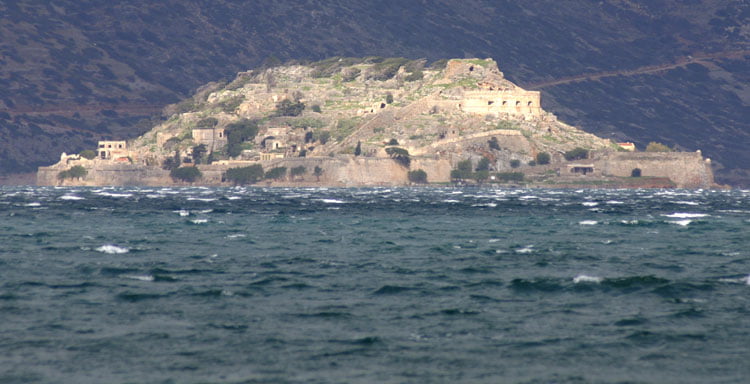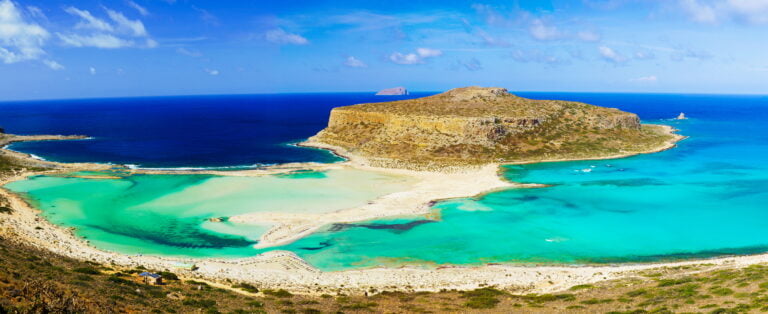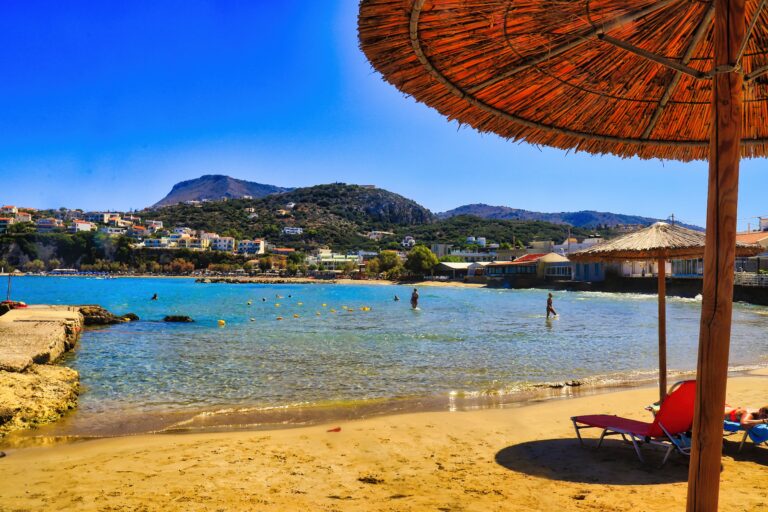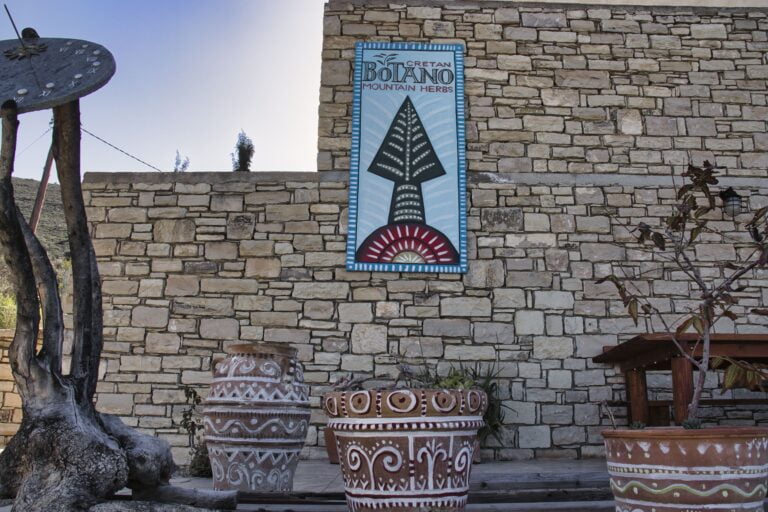Spinalonga: The Cretan Island of Resilience, Tragedy, and the Unbreakable Human Spirit
Deep in the heart of the Mediterranean, just off the rugged coast of Crete, lies the island of Spinalonga (original name Kalydon), a testament to the indomitable spirit of humanity. This narrative ventures deep into the storied past of Spinalonga, tracing its evolution from a Venetian stronghold to an Ottoman community and, finally, to a refuge for those afflicted with leprosy. This journey is intricately tied to the village of Plaka, whose fate has been entwined with that of the island across the tides of time. Through the lens of history, culture, and human resilience, we explore the profound legacy of Spinalonga and its unbreakable bond with Plaka.
The Venetian Era: Fortifying the Gateway to Crete
The story of Spinalonga begins with the Venetians, who, in their quest to dominate the seas, transformed the island into a formidable fortress in the 15th century. This era was characterized by architectural innovation and strategic mastery as the Venetians sought to fortify their hold over the Mediterranean trade routes.
Architectural Ingenuity and Strategic Mastery
The fortress of Spinalonga was an architectural marvel of its time, designed to repel invaders with its daunting walls and strategically placed bastions. Constructed using the robust limestone of Crete, the fortifications were a testament to Venetian engineering prowess and their understanding of military defence mechanisms. A fusion of functionality and artistry marked this era as the Venetians created an impregnable and aesthetically remarkable stronghold.

The Societal Mosaic
Under Venetian rule, Spinalonga was more than a mere military outpost; it blossomed into a vibrant community reflective of the Venetian empire’s broader societal fabric. Artisans, soldiers, merchants, and families from diverse backgrounds mingled on the island, contributing to a rich cultural tapestry. This period saw the emergence of a society that, although defined by its military purpose, thrived through commerce, art, and a shared sense of community. The island’s populace lived within the shadows of the fortress walls, carving out a life that was uniquely their own amidst the backdrop of the Venetian empire’s grandeur.
The Ottoman Influence: A New Chapter Unfolds
The conquest of Crete by the Ottomans in the 17th century heralded a new era for Spinalonga. Once a bastion of Venetian power, the island was absorbed into the sprawling Ottoman Empire, undergoing significant social and cultural transformation.
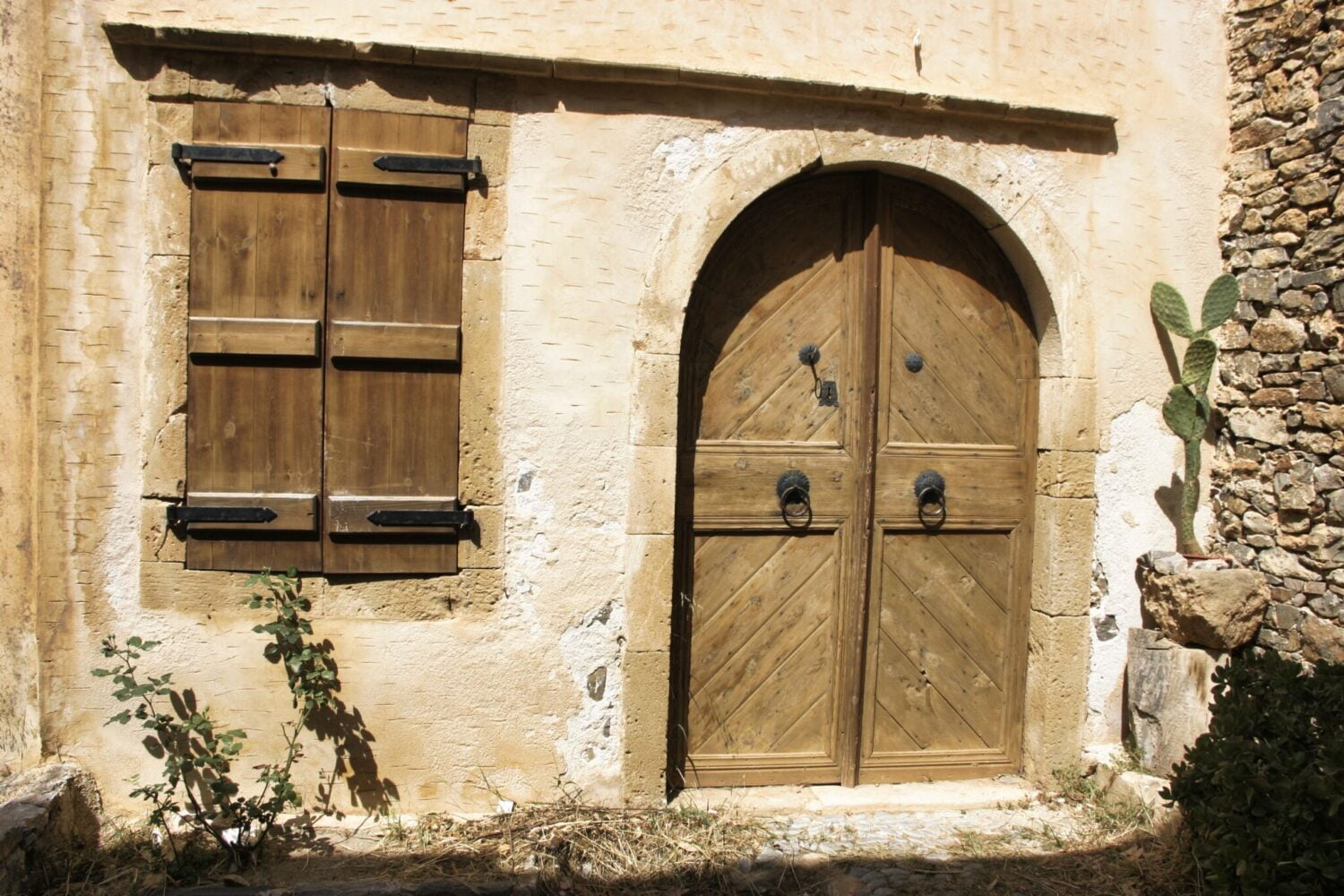
Cultural Synthesis and Community Life on Spinalonga
Spinalonga experienced a profound shift in its societal composition and daily life with the Ottoman takeover. The Ottomans introduced a new layer of cultural diversity, blending Islamic traditions with the existing Christian heritage. This era was characterized by a remarkable degree of religious tolerance, allowing for a harmonious coexistence of Muslims and Christians. The architectural landscape of the island evolved, with Ottoman influences permeating the Venetian structures, creating a unique aesthetic mirrored the cultural synthesis occurring within its walls.
Economic Transformation and Integration
The economic landscape of Spinalonga under Ottoman rule shifted towards a more rural and trade-focused economy. The island’s strategic importance continued to play a pivotal role, albeit in a different context. The vibrant marketplaces and the integration of Spinalonga with the broader economic networks of the Ottoman Empire highlighted the island’s continued significance.
This period further cemented the ties between Spinalonga and the mainland, particularly with the village of Plaka, which emerged as a critical point of interaction for trade and communication, underscoring the enduring human capacity to find unity and compassion amidst suffering. Despite the fears and stigmas surrounding leprosy, the villagers of Plaka played a crucial role in maintaining the lifeline to Spinalonga, embodying a bridge of humanity that transcended the physical divide.
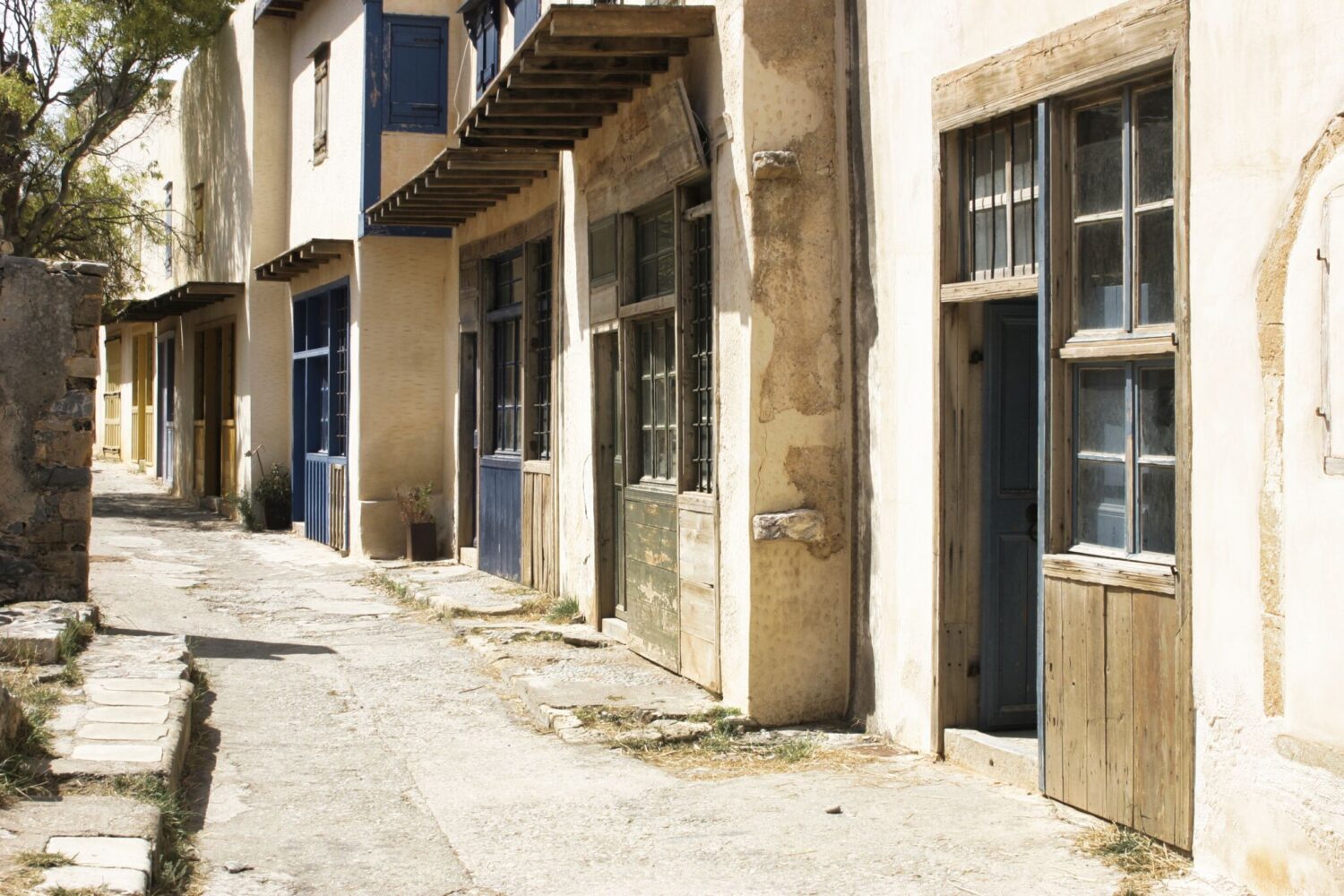
Enduring Humanity Amidst Isolation
The leprosy colony on Spinalonga, operational from the early 20th century until its closure in 1957, represents a poignant chapter in the island’s history, marked by profound suffering and remarkable human resilience. The colony’s establishment reflected the period’s medical understanding and societal attitudes towards leprosy, a disease shrouded in stigma and fear.
The Leprosy Colony: A Microcosm of Society
Upon arrival, the patients of Spinalonga found themselves in a world apart, isolated from society and faced with the reality of living with a misunderstood and feared condition. Yet, within this confinement, a remarkable community spirit emerged. The colony developed its societal structures, mirroring the complexities of a fully functioning society.
Governance and Self-Management
The residents established a form of self-governance, with elected officials and communal decision-making processes that ensured the smooth running of the community. This self-administration included the organization of medical care, social welfare, and even the enforcement of laws within the colony.
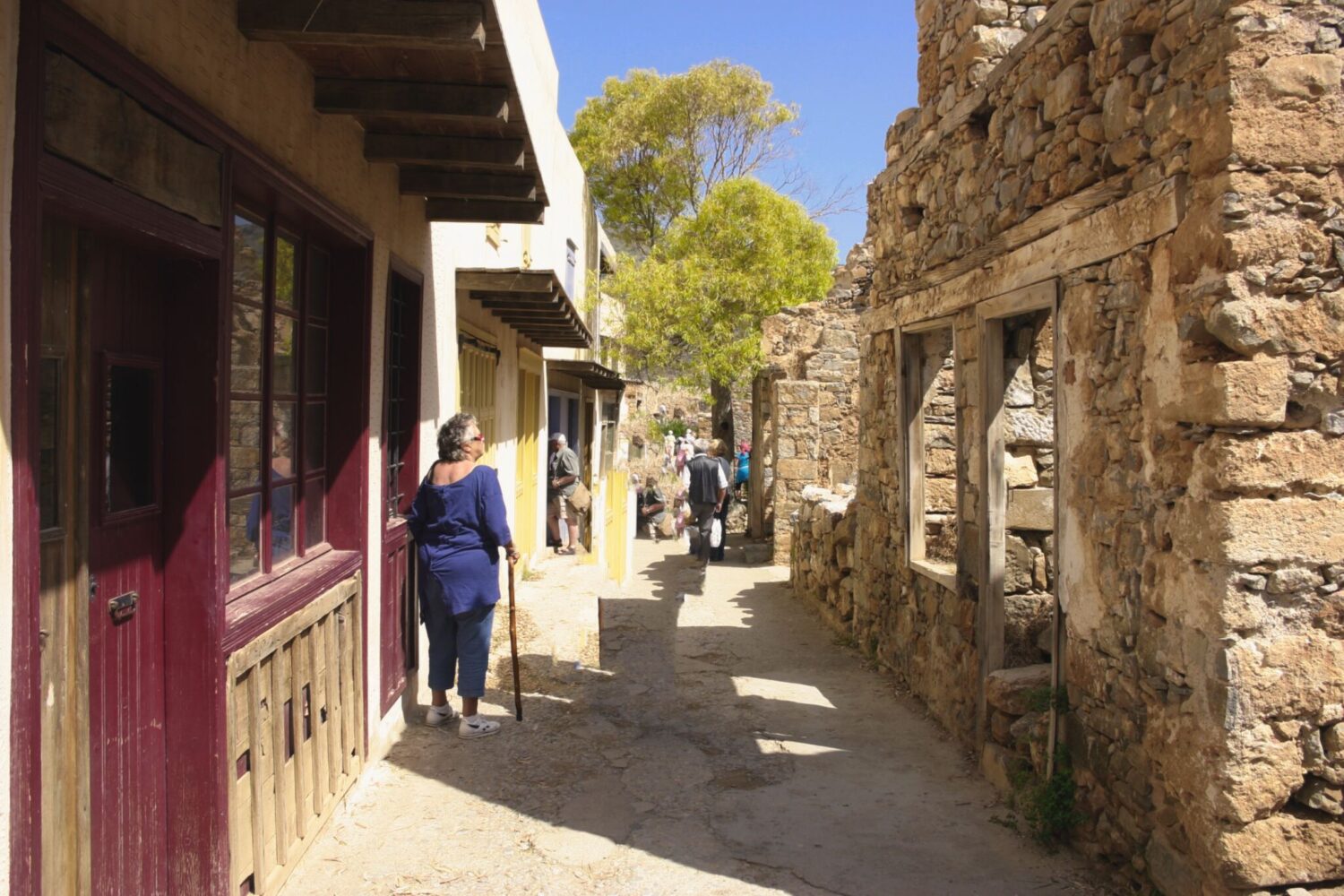
Economic Vitality and Cultural Life
Despite the challenges, the colony thrived economically and culturally. The residents maintained a degree of self-sufficiency through cultivating small gardens, fishing, and support from charitable organizations. Workshops for skills such as weaving and carpentry were established, allowing residents to contribute to the community’s welfare and sustain themselves.
Cultural and recreational activities became a cornerstone of life in Spinalonga, establishing a school, library, and even a small theatre. Music, literature, and art flourished, providing residents a creative outlet and a sense of normalcy. Religious services and festivals were observed, reflecting the community’s diverse faiths and fostering a sense of belonging and collective identity.
The Role of Medical Advancements
The colony’s existence was intricately linked to the evolving understanding of leprosy and its treatment. The introduction of sulfone drugs in the mid-20th century marked a turning point in the fight against the disease, offering effective treatment for the first time. This medical breakthrough gradually led to a decline in the number of residents on Spinalonga, as patients began to receive treatment that allowed for their reintegration into society.
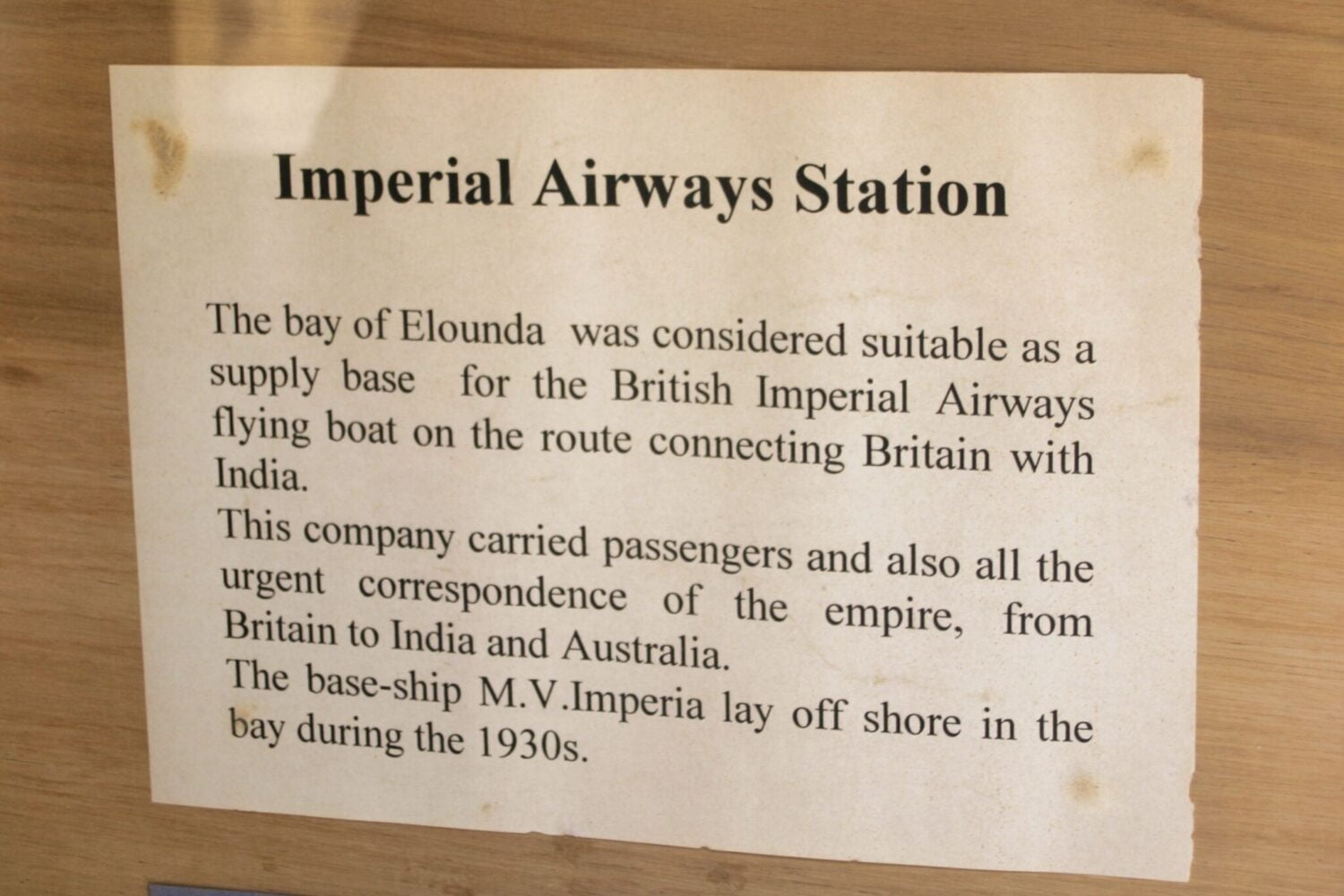
The Lasting Legacy of the Leprosy Colony
The closure of the leprosy colony in 1957 did not mark the end of Spinalonga’s story but rather the beginning of a new chapter in its legacy. Today, the island stands as a poignant reminder of the resilience of the human spirit in the face of adversity. The stories of those who lived on Spinalonga, their struggles, and their triumphs continue to resonate, offering lessons in compassion, strength, and the unyielding desire for dignity and community.
Visitors to Spinalonga are not just walking through ruins; they are walking through the remnants of a community that, despite being formed under the shadow of disease and isolation, demonstrated the profound capacity for humans to adapt, support one another, and find joy in life’s darkest moments. The legacy of the leprosy colony on Spinalonga is a testament to the enduring power of the human spirit, a beacon of hope that continues to shine, illuminating the paths of understanding, empathy, and shared humanity.
The connection between Spinalonga and Plaka strengthened through years of shared history and emotional ties, remains a powerful symbol of this enduring legacy. The village of Plaka, with its picturesque beauty and tranquil shores, serves as the gateway to Spinalonga’s rich history, inviting visitors to reflect on the profound stories of resilience and human connection that have shaped this remarkable island.
Table of Contents
Views: 115


